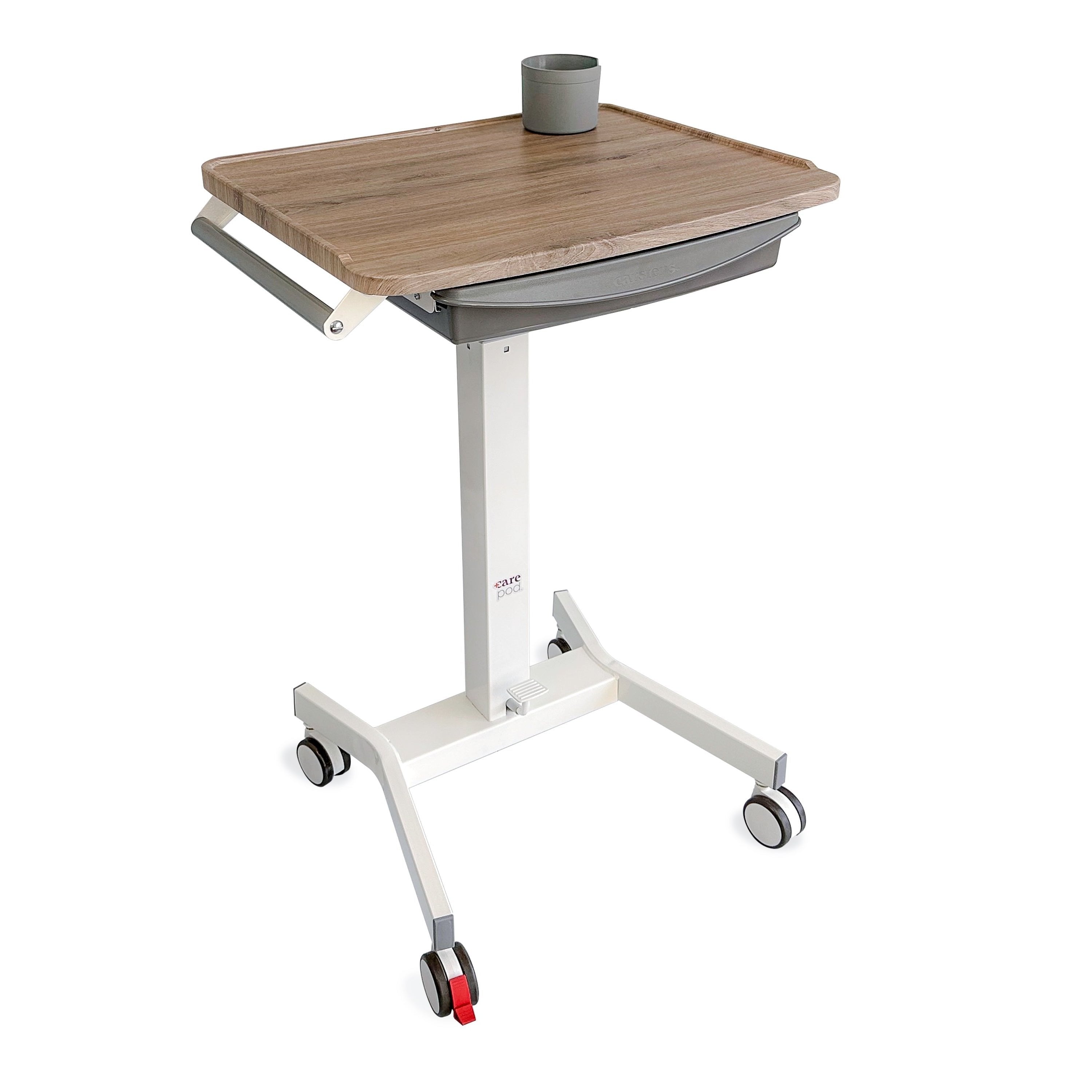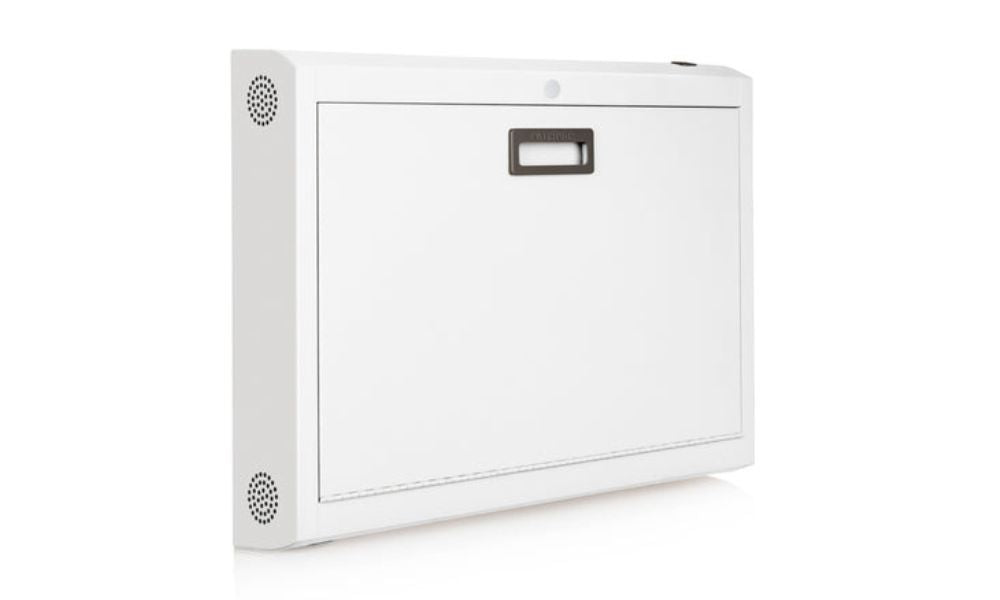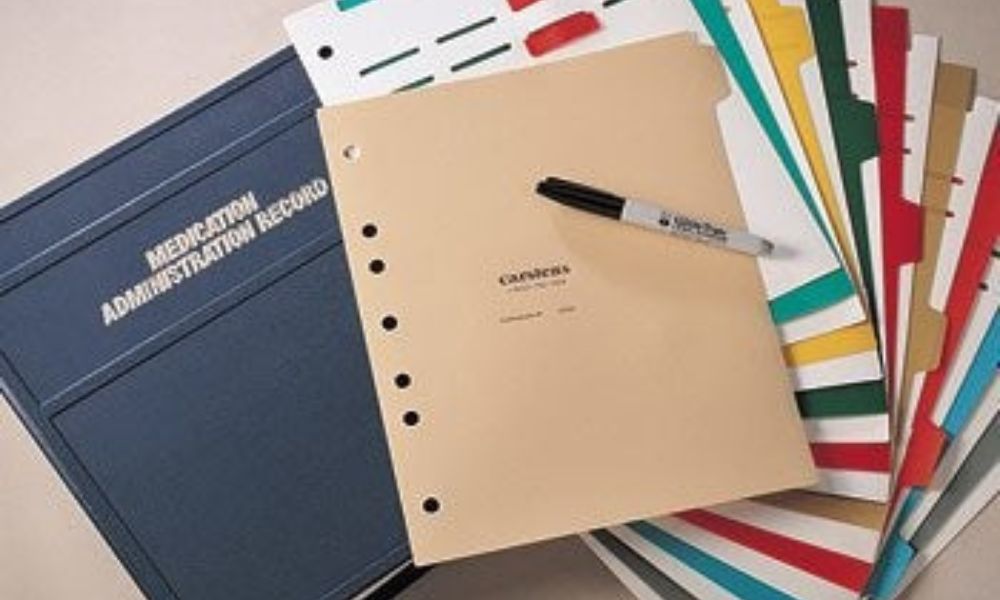Medical professionals constantly strive to improve patient care by adopting the latest technology, but it’s important not to overlook the value of traditional systems such as paper medical records. While Electronic Medical Records (EMR) may dominate the industry, physical documents still have a vital role in today’s healthcare ecosystem.
Let’s explore why backup paper medical records remain essential for medical professionals and how chart racks can help keep these crucial documents organized and accessible.
Going Back to Basics: The Pros of Paper Medical Records
Picture this: the power’s out, the Wi-Fi’s down, and your computer screen is ominously dark. If you work in healthcare, this situation could cause a major headache. With electronic medical records temporarily inaccessible, you can be left without vital information about your patient’s health history and care plans. Luckily, there’s a trusty backup waiting in the wings: good old-fashioned paper medical records.
Let’s take a closer look at exactly when and why paper medical records are worth their weight in gold.
- During Technological Failures: If there’s a power outage, system glitch, or internet downtime, electronic records may become temporarily inaccessible. In these scenarios, having backup paper medical records can ensure continuous patient care.
- In Remote Locations: Paper records can be extremely useful in remote or under-resourced locations with limited access to electricity or internet connectivity.
- For Patients Over 65: Older patients who are less comfortable with technology may prefer to use paper records. This system also allows them to share their records with various healthcare providers with ease.
- Security Purposes: In case of a cyberattack, having a physical copy of medical records ensures that patient information remains safe and secure.
- During Audits and Compliance Checks: Physical copies of records can assist in auditing and compliance procedures by providing a tangible record of patient interactions.
Ensuring the Accuracy of Paper Medical Records
Ensuring that paper medical records remain accurate and up-to-date is of paramount importance in the healthcare industry. Inaccurate or outdated information can lead to misdiagnosis, inappropriate treatment, or a delay in care provision. Below, we’ll provide some useful strategies for medical professionals to ensure the accuracy and currency of paper medical records.
- Regular Updating: Medical professionals should update patient records immediately after each consultation, procedure, or change in medication. This practice ensures that the most recent information is always available.
- Frequent Reviews: Regular reviews of patient files can help identify and correct any inaccuracies or inconsistencies. A dedicated team should conduct these reviews, or they should become part of a healthcare professional’s daily duties.
- Patient Involvement: Encouraging patients to review their records can also help in identifying errors. Patients may spot inaccuracies or omissions in their personal information, medical history, or treatment plans.
- Training and Education: Staff training on appropriate documentation and record-keeping practices can ensure that everyone understands their role in maintaining accurate and up-to-date records.
- Secure Storage and Handling: Proper storage and handling of paper medical records can prevent physical damage or loss of documentation, which may lead to inaccuracies or missing information.
Chart Racks: The Backbone of Backup Paper Medical Record Systems
In this age of digitization, medical professionals must be diligent in preserving backup paper medical records as a necessary complement to their EMR system. Chart racks can be the backbone of this process by organizing and storing physical documents efficiently and securely.
Chart racks provide a centralized place to gather and protect paper records from damage, loss, or mishandling—making this tool an essential component of any healthcare facility.
Alternative Paper Medical Record Storage Solutions
While chart racks offer an effective and convenient solution for organizing paper medical records, other storage methods also exist to cater to different needs and circumstances in a healthcare setting.
Filing Cabinets
Traditional filing cabinets remain a reliable storage option, offering a high capacity for document storage, durability, and the ability to organize files alphabetically or numerically. They come with locks for added security, protecting sensitive patient information.
Mobile Carts
These offer portability, allowing medical professionals to move documents to where they’re needed most. Mobile carts can help streamline processes in busy healthcare environments, ensuring vital patient information is always at hand.
Binders
A system of binders can be useful for storing and organizing individual patient records. Each binder can contain the complete medical history of a patient. Using tabs for different categories of information makes records easy to navigate.
Finding the Perfect Balance
Striking the right balance between EMR and backup paper medical records can be the key to optimizing productivity and ensuring high-quality patient care. By leveraging both systems, medical practices can benefit from the best of both worlds—state-of-the-art technology and time-tested documentation methods.
Adopting EMR allows medical professionals to manage their patient records more effectively by reducing the risk of human error and streamlining the overall healthcare workflow. In contrast, backup paper records offer a layer of added security and reliability.
The Challenges of Relying Solely on Electronic Medical Records
While Electronic Medical Records (EMRs) have revolutionized healthcare, they’re not without their challenges. The following are some of the potential issues that can arise with the use of EMRs.
- Software Issues and Technical Glitches: The efficiency of EMR systems heavily depends on the effectiveness of the software used. Technical issues, software crashes, and system outages can disrupt access to patient records, potentially affecting patient care.
- Training and Adaptation: Learning how to use EMR systems effectively can require significant time and training. For some staff, particularly those who are less tech-savvy, the transition to digital can be daunting and may result in resistance to change.
- Data Entry Errors: While EMRs can help reduce errors in patient records, they’re not immune. Misinterpretation of information, typing errors, or incorrect patient data entries can lead to serious consequences.
- Interoperability: Integrating and sharing data between different EMR systems can be a technical challenge. Difficulties in seamless communication between systems can hinder the sharing of vital patient information.
Despite these challenges, the benefits of EMRs often outweigh the drawbacks. However, these challenges highlight the importance of maintaining backup paper medical records as a safety net.
Embracing Security and Simplicity
Now that you know why it’s essential to have backup paper medical records, you may have a better understanding of why keeping paper medical records is vital. The benefits alone are indisputable: peace of mind, accessibility, and security.
With the increasing reliance on electronic health records, it’s become more critical than ever to have a physical copy as a backup. Don’t let an unexpected technology malfunction or power outage leave you in a state of panic. Take the necessary steps now to secure your medical information by having a printed copy on hand.







